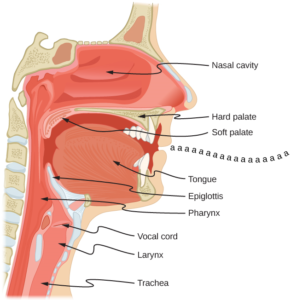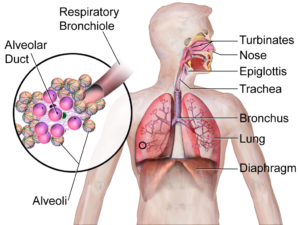Are you tired of going to karaoke with your friends and not being able to master those high notes like singers Whitney Houston or Mariah Carey? While this blog post cannot promise the high quality of those amazing singers, it will demonstrate how through practice you can master the art of singing. To master singing you must first understand the biology and mechanics of your singing voice, so you can learn how to manipulate both to your benefit. This can extend to vocal production and communication studies, but the focus will be singing.
The vocal anatomy in the human body is composed of vocal chords, the larynx or voice box, trachea, diaphragm muscle, and airflow passages. Vocal chords, commonly referred as vocal folds, are flexible and delicate tissues that can withstand high frequency vibrations. The larynx is a tube in the human neck that holds the vocal chords. The trachea is a long tube that extends from the larynx and passes air to and from the lungs, otherwise known as the windpipe. Lastly, the diaphragm is a large muscle that separates the cavity containing the heart and lungs from the abdominal cavity. These definitions will become useful when discussing the process of singing.
The organization Learn to Play Music described the biological process involved in singing in a blogpost. As humans inhale, the diaphragms contracts, the lungs expand and draw in air. During exhalation, the diaphragm relaxes, and air exits through the lungs. As air exits the “breath” travels upward through the trachea and vocal chords which begin to vibrate. This vibration leads to the production of sound which is then augmented (made louder) by areas of mouth, throat, and behind the nose. Additionally, these spaces allow the sound by vibration to last longer and affect the tone of a person’s voice. The shape of a person’s mouth, tongue, and lip movements can change the way the sound leaves the mouth by shaping the sound produced.
Music Professor Leigh Carriage at Southern Cross University analyzed how to use biomechanics to improve singing in an article. Singing involves varying pitches, loudness, voice quality (raspy, breathy, clear sounding) which requires control and coordination of muscles. These muscles must be flexible and strong which can be formed by practicing breathing control. To master singing a person needs to control the air pressure in their lungs and use their abdominal muscles to control the air flow. The most efficient way to control this pressure is through repetition or regular singing. This practice would strengthen the vocal system and improves vocal tone and power. Additionally, further expanding the abdomen when inhaling can lead to an increased contraction of the diaphragm. This would allow for more breath support when it comes to changing tone, pitch, or holding a note.
There are many biological and mechanical aspects to singing that can be analyzed to control the singing voice. See two additional readings here and here to learn more. Overall, practicing the control of your breathing during inhalation and exhalation helps master singing. By controlling the air flow, you can improve tone, pitch, and the power behind your voice at karaoke!
Check out this cool video!
https://www.youtube.com/watch?v=J3TwTb-T044
Featured image by Josh Rocklage under Unsplash License



